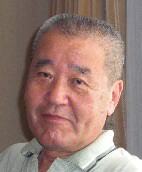
MRS-J News Vol.21 No.2 May 2009
Dilemma of “Carbon”

Ex-President of Carbon Society of Japan, Professor Emeritus of Hokkaido Univ., Dr. Michio INAGAKI
 |
High-density plasma generation along metal surface by using microwave propagation along plasma-sheath interfaces
|
Associate Professor, Dr. Hiroyuki KOUSAKA, Department of Mechannical Science and Engineering, Graduate School of Engineering, Nagoya University
We have proposed a novel method of microwave plasma generation for the surface treatment and coating of small halls of metal parts where the inner diameter of hall is millimeter size. The newly proposed method takes advantage of a physical phenomenon that electromagnetic waves propagate as surface waves along the interface between plasma and ion sheath bounded by metal which is electrically biased to a negative voltage against plasma. By using the proposed method with 2.45-GHz microwaves, we conducted the DLC coating to a stainless-steel pipe with a length of 75 mm and an inner diameter of 4.4mm.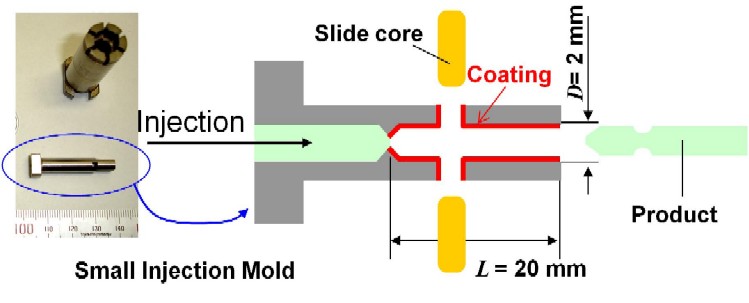
図-1 射出成型用の小型精密金型
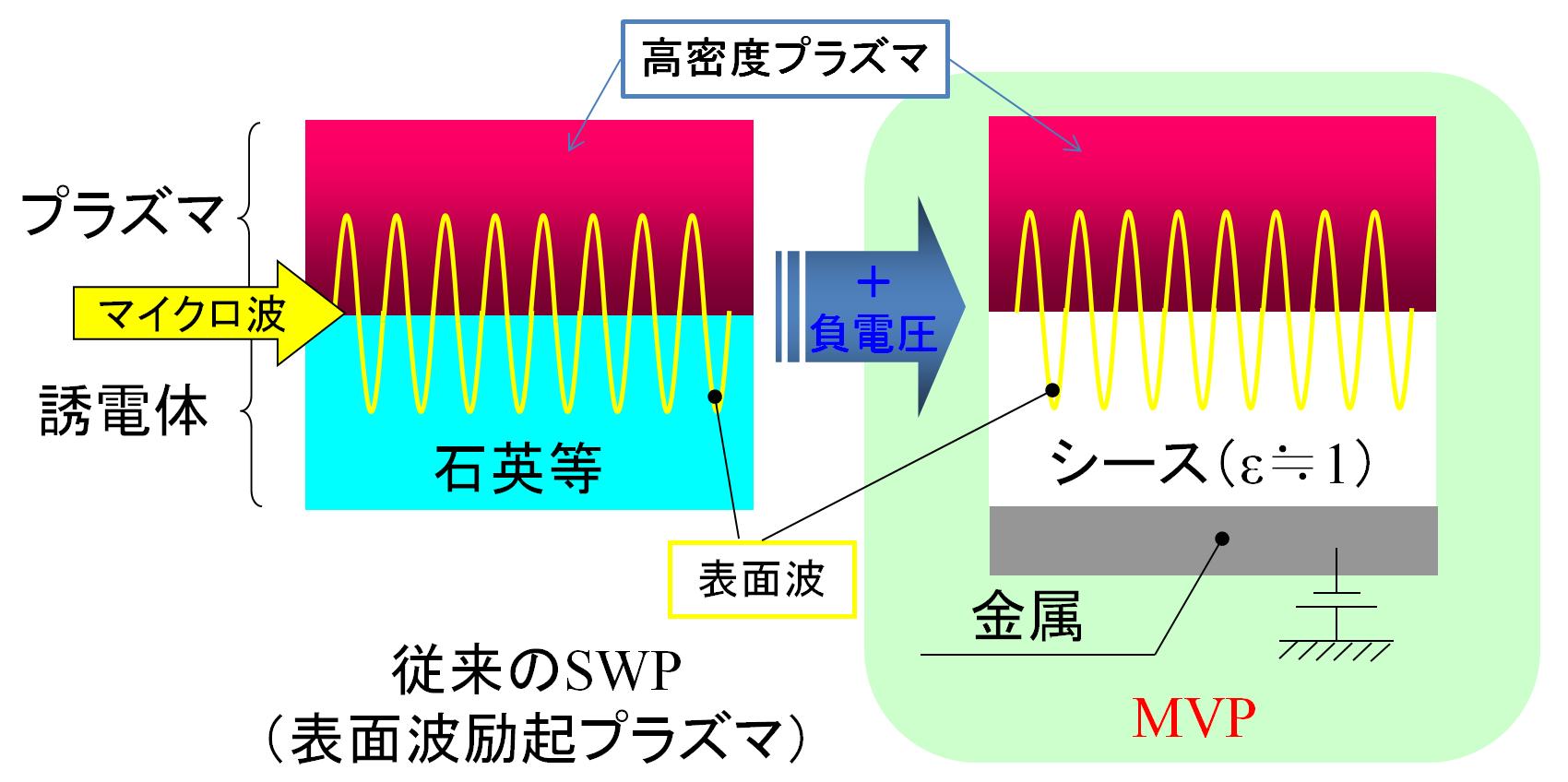
図-2 従来のSWP(Surface Wave-excited Plasma)と新しく開発したMVP(Microwave-sheath Voltage combination Plasma)の比較
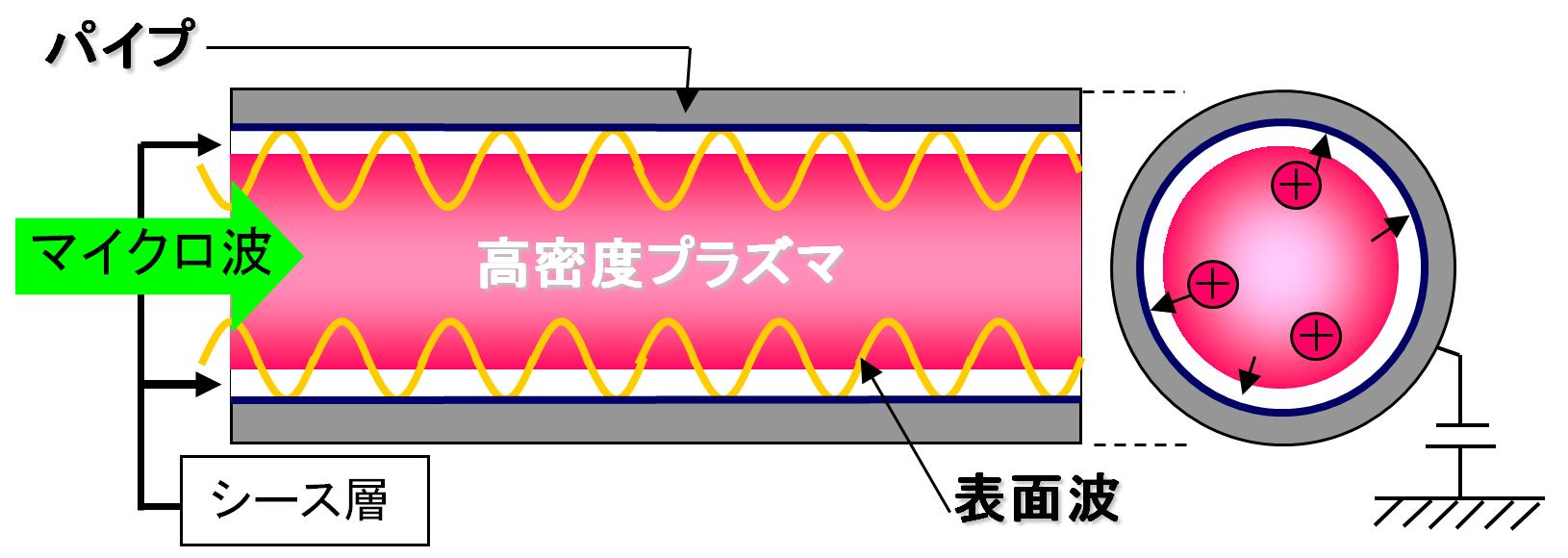
図-3 マイクロ波とシース電圧の協働効果によって生成されるMVP(Microwave-sheath
Voltage combination Plasma)とその細穴内面プラズマ生成への応用の模式図

図-4 1/4インチステンレス鋼製パイプ内面(内径:4.4mm)でのプラズマ生成。パイプ側面にあけた微細観察孔からの漏洩光によって内面でのプラズマ生成が確認できる。(a)パイプ長:75mmの内外面でプラズマが生成されている、(b)パイプ長:150mmの内面のみでプラズマが生成されている
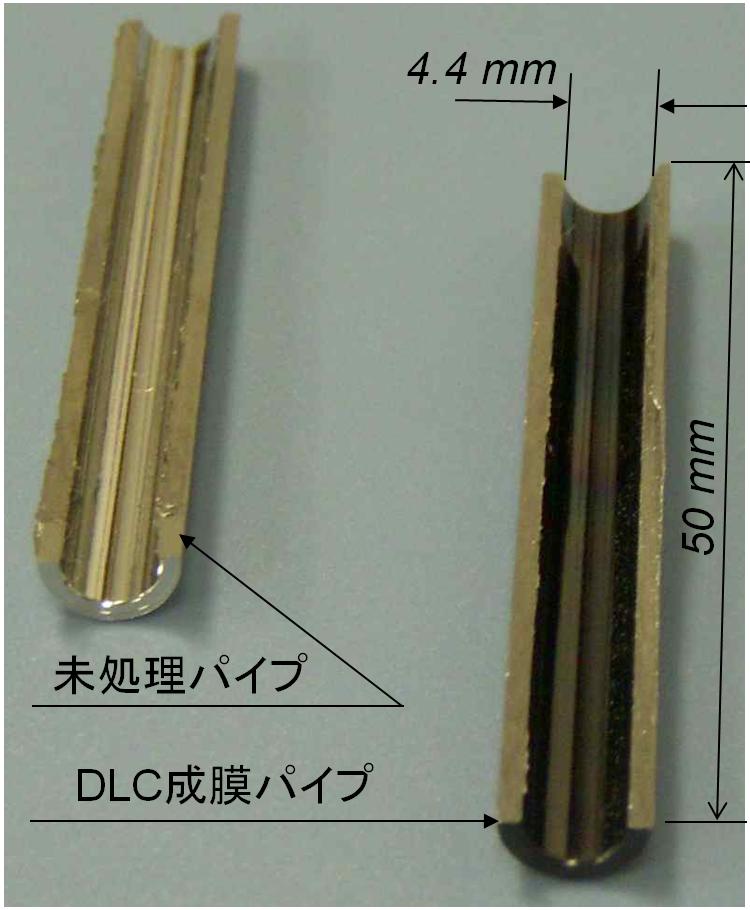
図-5 1/4インチステンレス鋼製パイプ内面(内径:4.4mm、長さ:50mm) へのDLC成膜

図-6 1/4インチステンレス鋼製パイプ内面(内径:4.4mm、長さ:50mm) に成膜されたDLC膜の軸方向膜厚分布
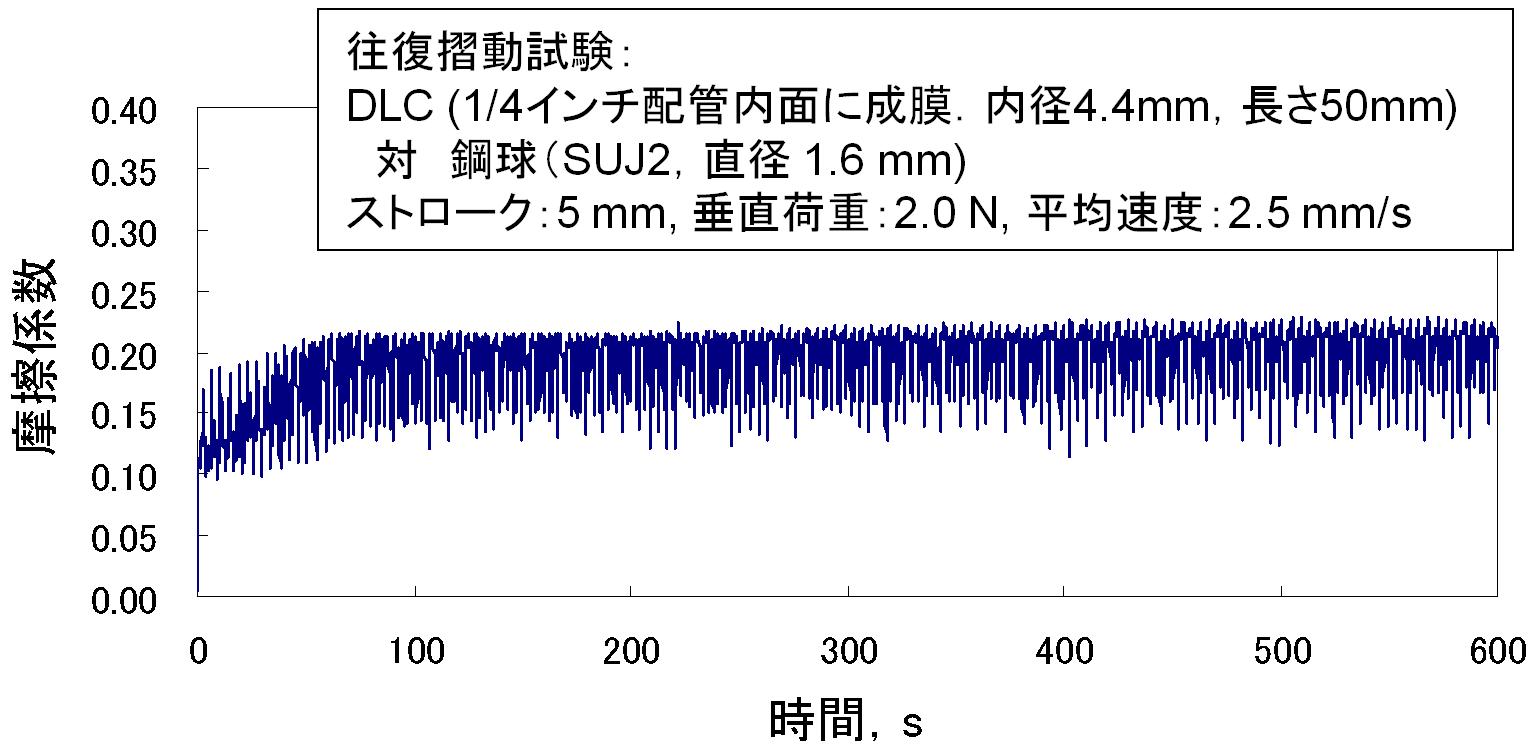
図-7 得られたDLC膜の往復摺動試験による摩擦係数測定結果
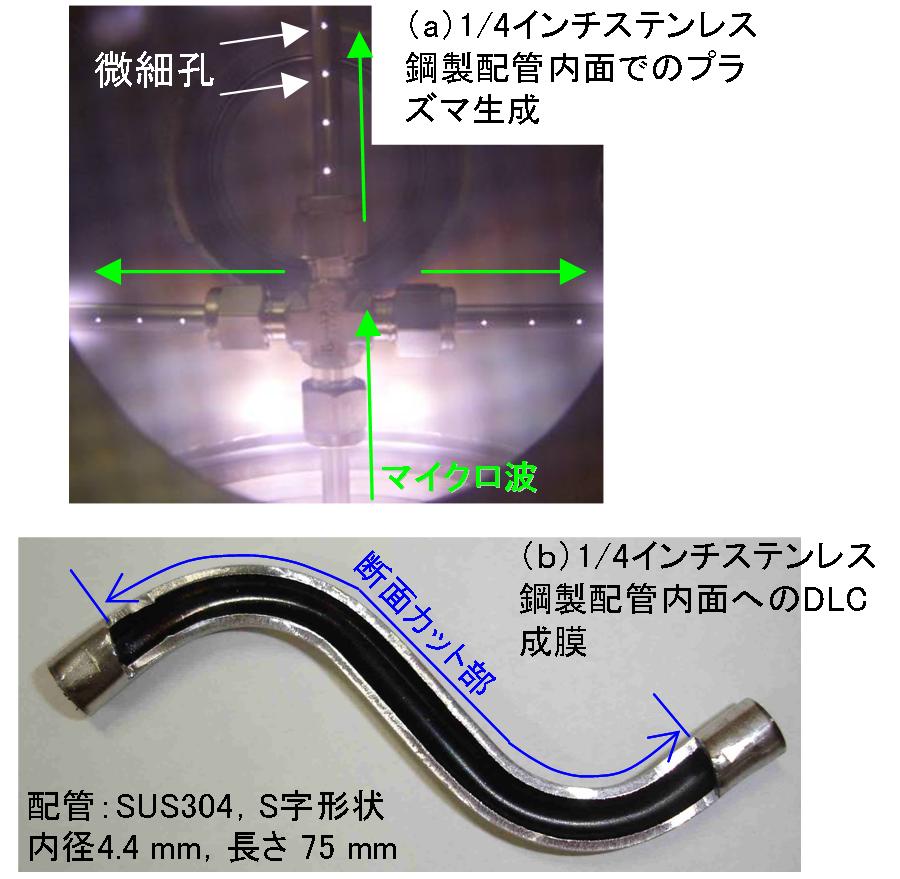
図-8 本稿で紹介する新開発手法による、1/4インチステンレス鋼製配管内面における(a)プラズマ生成、および(b)DLC成膜の結果。(a)においては、微細孔から漏洩する発光により内面プラズマの生成が確認される。新開発手法は分岐や曲がりにも対応する
| Contact: Associate Professor, Dr. Hiroyuki KOUSAKA Department of Mechannical Science and Engineering, Graduate School of Engineering, Nagoya University E-Mail: kousaka@mech.nagoya-u.ac.jp Tel/fax: 052-789-2787 |
 |
Production of Microbeam with Low-cost Glass Capillary |
Dr. Tokihiro IKEDA, Atomic Physics Laboratory, RIKEN
Tapered glass capillary has been used to produce micro/nano-meter sized beams of both keV-energy highly charged ions and MeV-energy proton or helium ions. We have employed this low-cost technique to realize micro-patterning on the sample surface by efficient potential spattering of slow highly charged ion microbeams and cell surgery aiming at the dysfunction of a single organelle in a living cell by proton or helium ion microbeams. [References]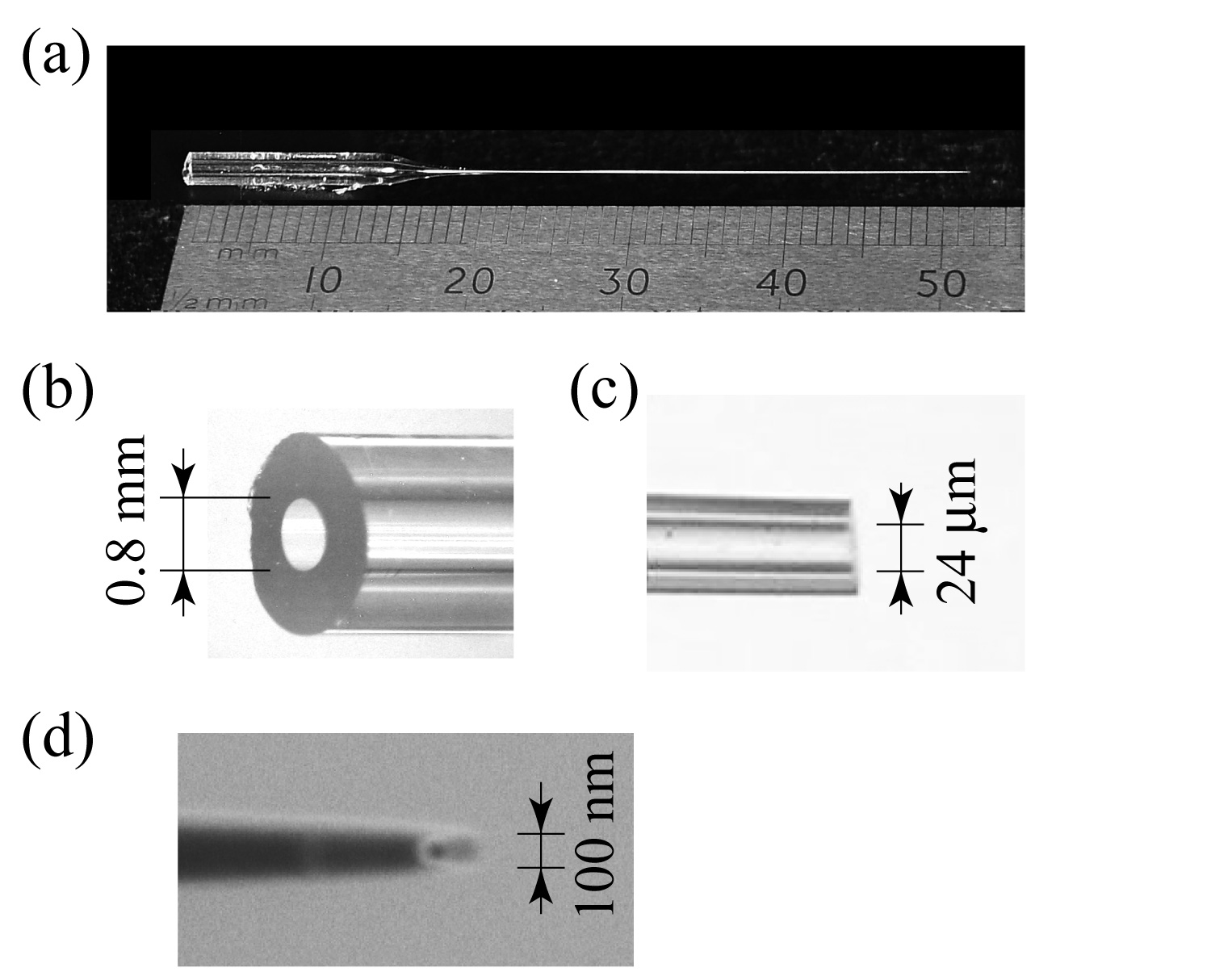
図-1 (a)ガラスキャピラリーの全体像、(b)ビーム入口付近、(c)ビームサイズが24μmφになるように切断された出口付近、(d)pullerで作製された直後の出口付近
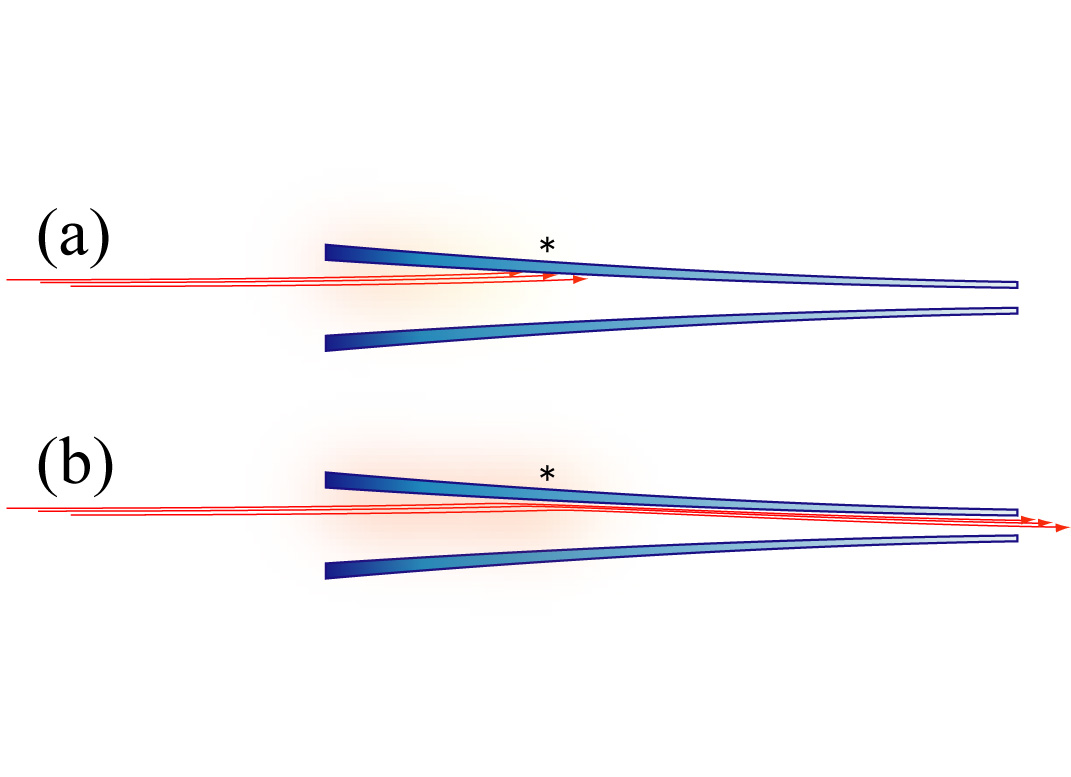
図-2 ガラスキャピラリー内の低速多価イオンビームの通過と自己組織化帯電現象
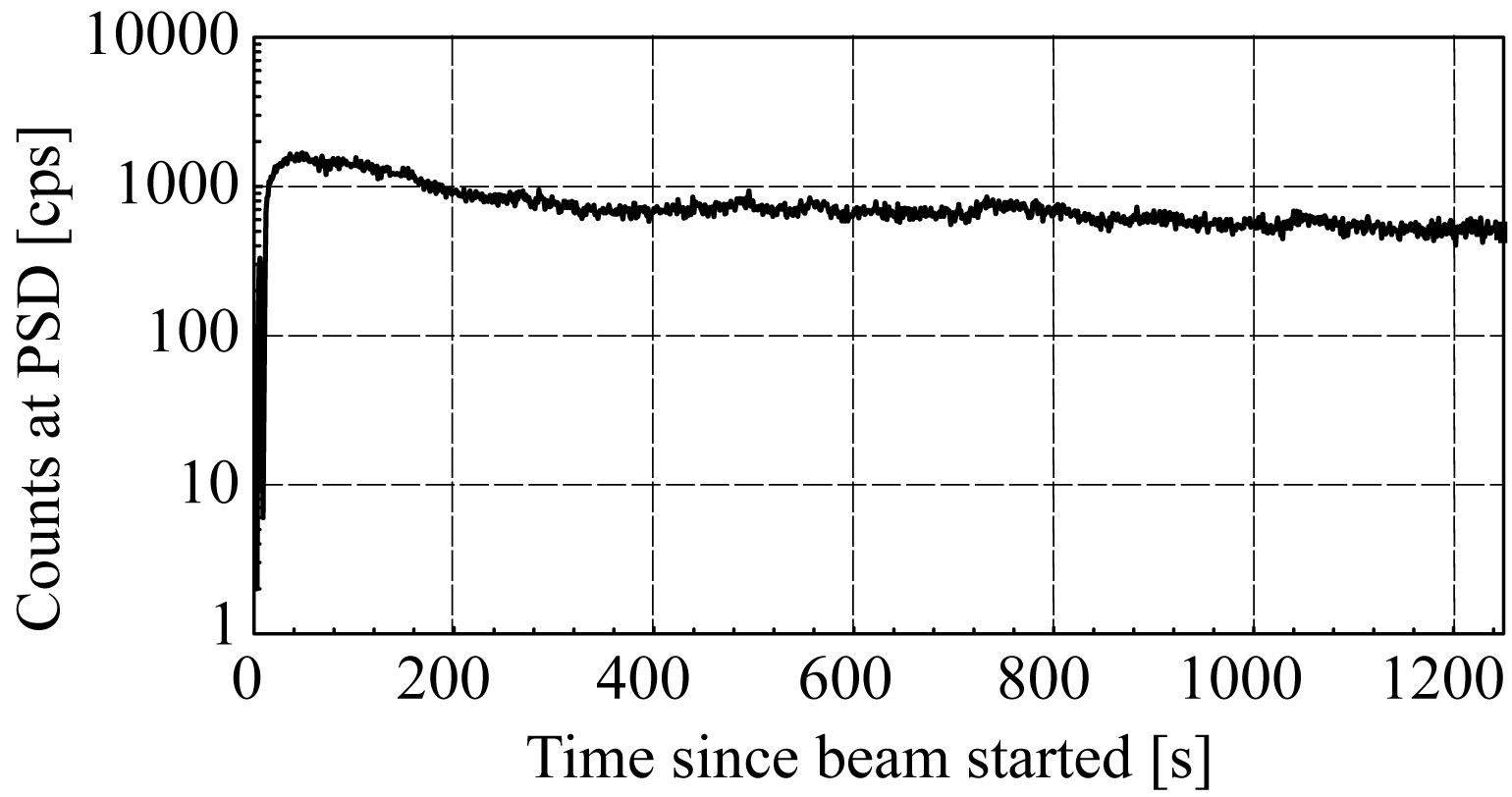
図-3 通過イオンビーム強度の時間変化(出口径24μm)。通過強度の立ち上がりに50秒くらい要しており、この50秒間が自己組織化帯電分布の形成に費やされたと考えられる
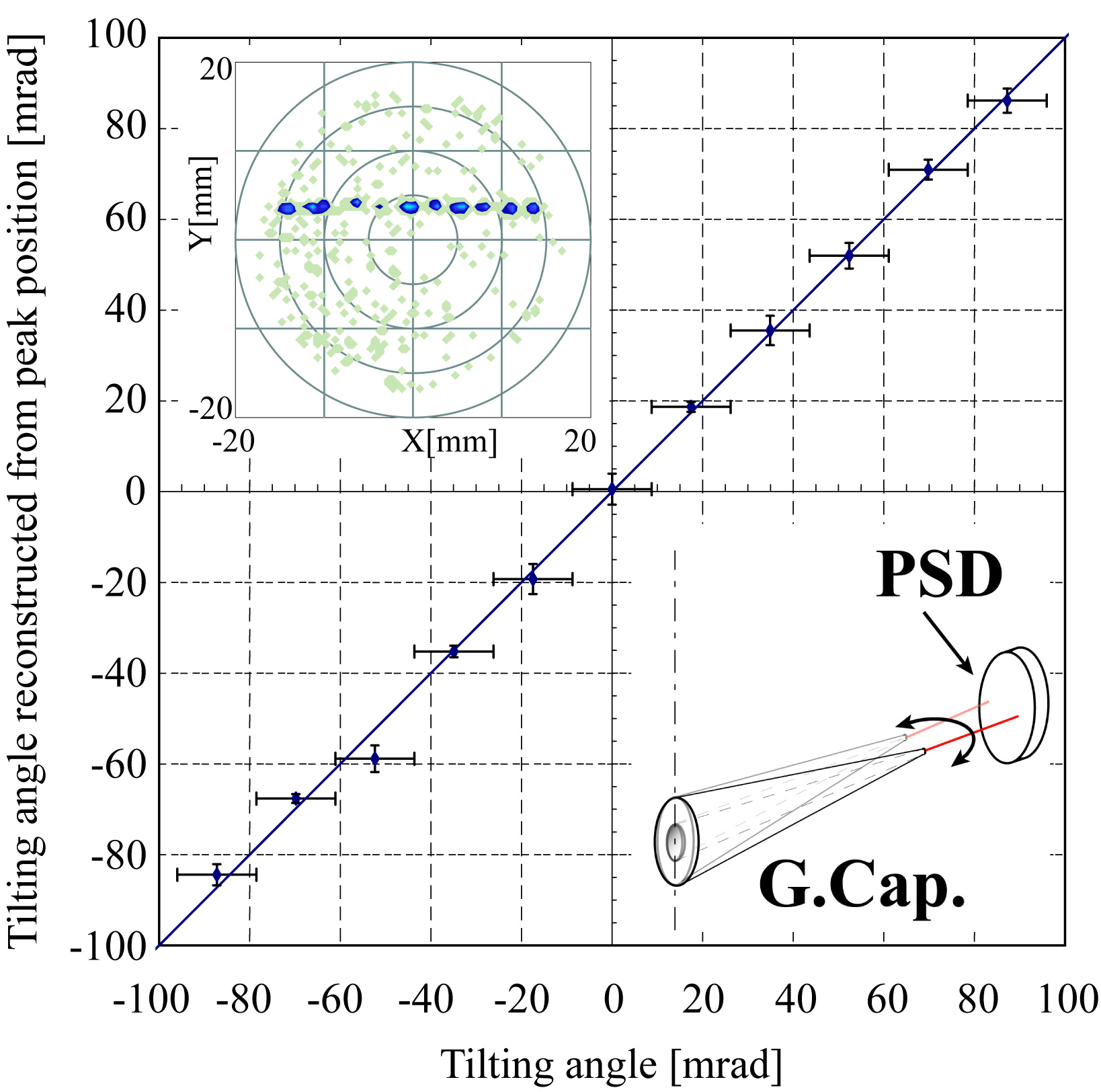
図-4 キャピラリーをティルトさせることでビームを偏向させることができる
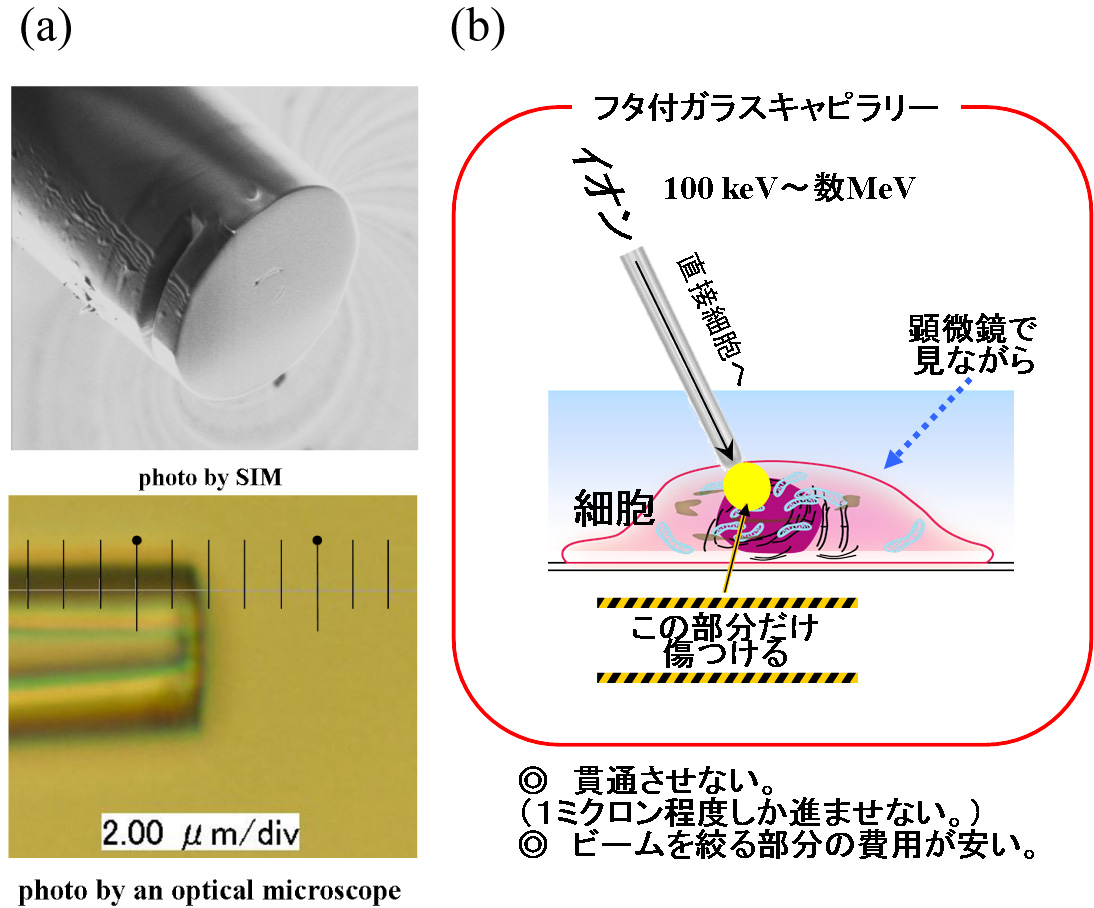
図-5 キャピラリーのビーム出口にガラス製の蓋を付けたものを開発した
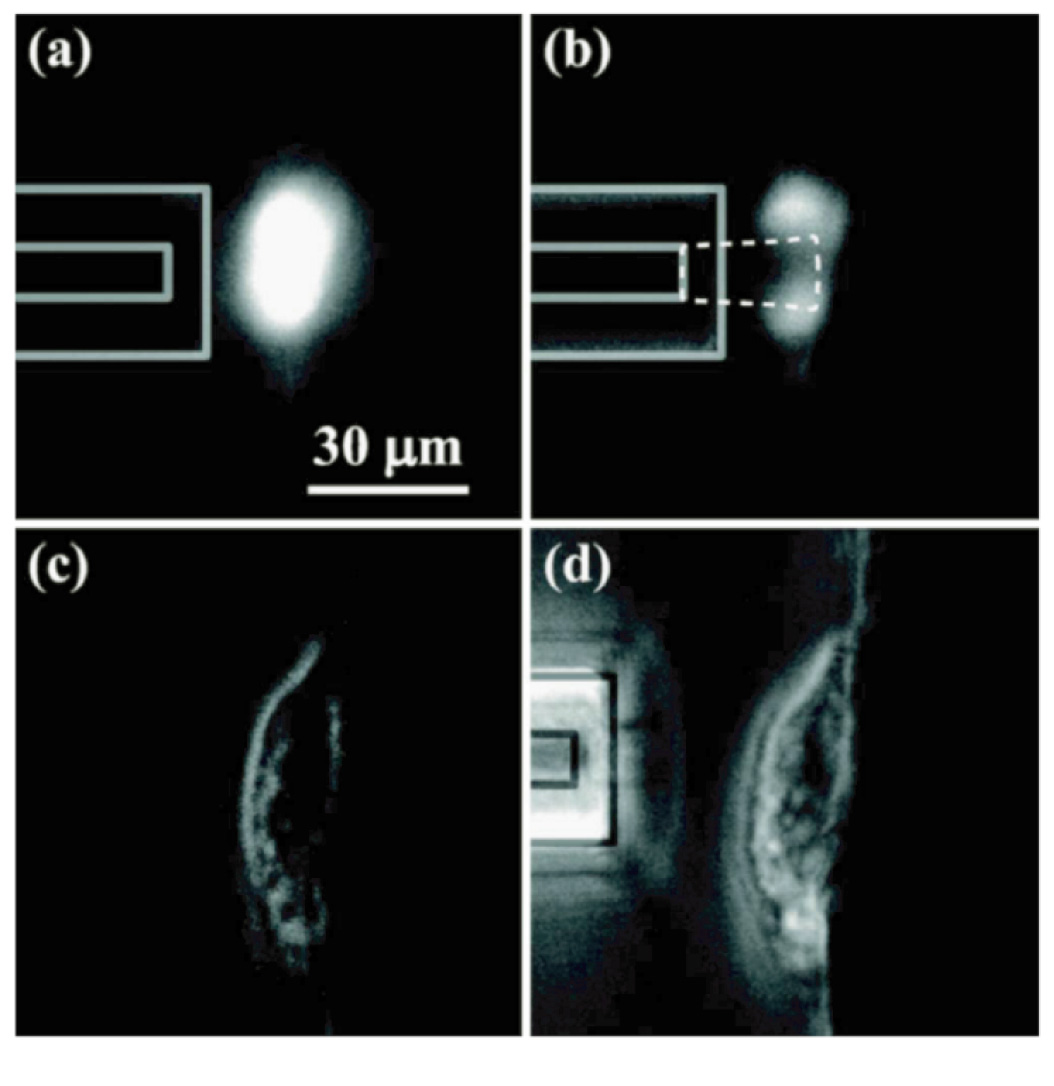
図-6 ヒストンとGFPの融合タンパク質でラベルされた核をもつHeLa細胞への照射前と後の写真:蛍光イメージによる照射前(a)と照射後(b)、および位相差顕微鏡でのイメージによる照射前(c)と照射後(d):(d)では、照射が終了してガラスキャピラリー先端を細胞から離したところ。また、(b)の点線領域はSRIM-2006によるシミュレーションで予測した被照射領域
Table-1 Merits of glass capillary
| 1. 100nmオーダーのビーム径が容易に実現 2. 集束(粒子密度向上)できる 3. 出射ビーム拡がりをmrad程度に抑えられる 4. 集束させてもサンプル付近は電場/磁場フリー 5. ビームをガイド(偏向)できる 6. ビーム出射口位置が容易に確認できる 7. 低価格 8. 初期ビームのエミッタンスは良い必要なし 9. 様々な荷電粒子に応用可能 10. 気体/液体中のサンプルに照射可(蓋付) 11. サンプル中のビーム停止位置を制御可(蓋付) |
| Contact:Dr. Tokihiro IKEDA, Atomic Physics Laboratory, RIKEN Tel: 048-462-1111(ext. 3645) Fax: 048-462-4644 tokihiro@riken.jp http://www-ap.riken.jp/nanobeam/ |
The 19th MRS-J Academic Symposium
The 19th MRS-J Academic Symposium will be held in Yokohama. A wide range of topics of contemporary importance for science, engineering and technology of materials will be highlighted.
The main interests will be focused on “advanced materials researches breakthrough to innovation.”
For further information please contact to MRS-J: E-mail: mrs-j@sntt.or.jp, http://www.mrs-j.org/
Transaction of the MRS-J
▽Vol.34, No.1, March(2008)
IUMRS-ICA 2008 Symposium
・Symposium A Reactivity of Solids, 1 papers
・Symposium B Development of Oxide Nanocomposites-Bulks, Thin Films and
Nano-structures, 3 papers
・Symposium I Structure Induced Giant Nature, 7 papers
・Symposium P Advanced Ferroic Materials: Processing, Characterization
and Device Application, 15 papers
・Symposium V Ceramic Materials for Biomedical Applications, 4 papers
・Symposium LL Materials Frontier, 8 papers Total 40 papers